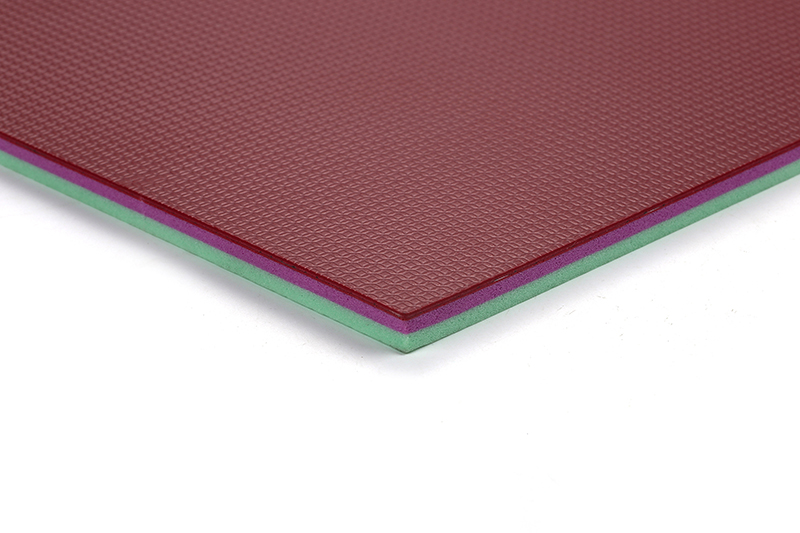lis . 11, 2024 06:26 Back to list
outdoor flooring for basketball
Outdoor Flooring for Basketball The Best Options to Enhance Your Game
Playing basketball outdoors can be an enjoyable and thrilling experience, but having the right outdoor flooring can make a significant difference in performance and safety. Whether you’re setting up a court for casual play or building a dedicated facility, understanding the various flooring options available will help you make an informed choice. This article explores the best outdoor flooring solutions for basketball, their benefits, and what to consider when choosing the right one.
1. Asphalt
Asphalt is one of the most popular materials used for outdoor basketball courts. It is known for its durability and affordability, making it an accessible choice for many. Asphalt surfaces are resistant to extreme weather conditions, ensuring consistent playability throughout the year. While asphalt courts can become slippery when wet, proper maintenance including regular sealing can help mitigate these issues. Additionally, the dark color of asphalt absorbs heat, helping to dry wet surfaces faster.
Pros - Cost-effective - Durable and long-lasting - Quick installation
Cons - Can become hot in summer - Requires maintenance to prevent cracks
2. Concrete
Concrete is another highly favored material for outdoor basketball flooring. Like asphalt, it provides a sturdy surface that can withstand heavy foot traffic and adverse weather conditions. Concrete courts can be customized with various colors and patterns, giving players a professional feel. However, concrete can be unforgiving, leading to hard falls or injuries if players are not careful, especially given its rigid nature.
Pros - Very durable and low maintenance - Customizable aesthetics - Smooth surface for ball handling
Cons - Can be hard on joints - Requires careful construction to ensure proper drainage
3. Modular Sports Tiles
Modular sports tiles are an innovative solution for outdoor basketball flooring. These interlocking tiles are typically made from high-quality polypropylene, offering excellent traction and cushioning. The flexibility of modular tiles allows for easier installation and replacement, making it simpler to repair isolated areas of damage without redoing the entire court. Moreover, they provide shock absorption, making games more comfortable for players.
Additionally, modular tiles come in various colors, giving courts a vibrant appearance. They also allow for drainage to prevent water accumulation, reducing slip hazards.
outdoor flooring for basketball

Pros - Excellent shock absorption - Easy to install and maintain - Customizable colors and designs
Cons - Higher initial cost compared to asphalt or concrete - Can be susceptible to UV degradation over time
4. Grass and Turf
While natural grass might not be the traditional choice for a basketball court, synthetic turf is gaining popularity. It offers a softer surface that is more forgiving on joints compared to concrete or asphalt. Turf basketball courts can be ideal for multi-sport activities, allowing for not just basketball but also soccer, tennis, and other games. However, maintaining a turf court can be more labor-intensive, requiring regular cleaning to prevent weed growth and ensuring that it remains level.
Pros - Softer surface for reduced injury risk - Good for multi-sport use - Visually appealing
Cons - Higher long-term maintenance costs - Limited to less formal play if not designed specifically for basketball
5. Acrylic Coatings
Acrylic coatings are often used in conjunction with asphalt or concrete surfaces. These coatings add a colorful, textured finish that enhances the playing experience. They provide a good level of traction and can also help protect the underlying surface from wear and tear. Acrylic coatings can significantly improve the aesthetic appeal of a court while remaining affordable, making them an excellent option for those looking to enhance existing surfaces.
Pros - Enhances surface aesthetics - Provides additional grip and durability - Cost-effective upgrade for existing surfaces
Cons - Needs reapplication over time - Not a standalone flooring solution
Conclusion
Choosing the right outdoor flooring for basketball is crucial for enhancing gameplay and ensuring players' safety. Each option has its unique advantages and potential drawbacks, making it essential to consider factors such as budget, intended use, and maintenance requirements. Whether you opt for the affordability of asphalt, the durability of concrete, the comfort of modular tiles, or the softness of turf, the right outdoor flooring will help create an enjoyable basketball experience. By investing in quality outdoor flooring, you’ll be well on your way to enjoying countless hours of basketball with family and friends.
-
Multi Purpose Court Surface for Versatile Sports Use | Durable Tiles
NewsJul.25,2025
-
Durable Sport Court Tiles for Multi-Purpose Courts & Outdoor Use
NewsJul.24,2025
-
Durable Multi Sport Court Tiles for Indoor & Outdoor Use
NewsJul.23,2025
-
Premium Outdoor Court Tiles for Multi-Sport Use – Durable & Easy Install
NewsJul.22,2025
-
Premium Oval Running Track Solutions | Durable & Versatile
NewsJul.22,2025
-
Durable Sport Court Tiles for Pickleball & Multi-Use | Buy Now
NewsJul.21,2025

